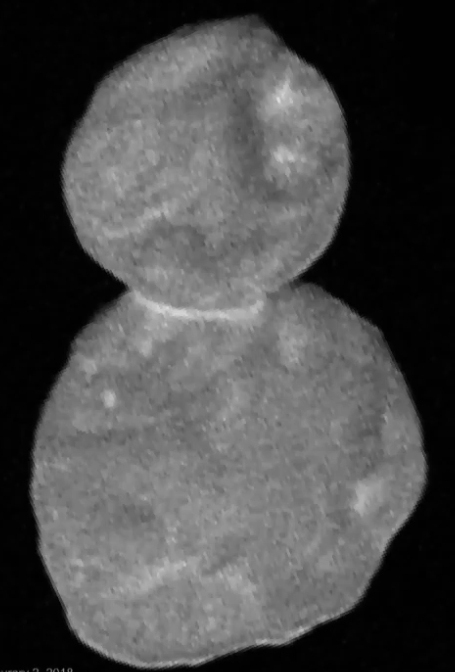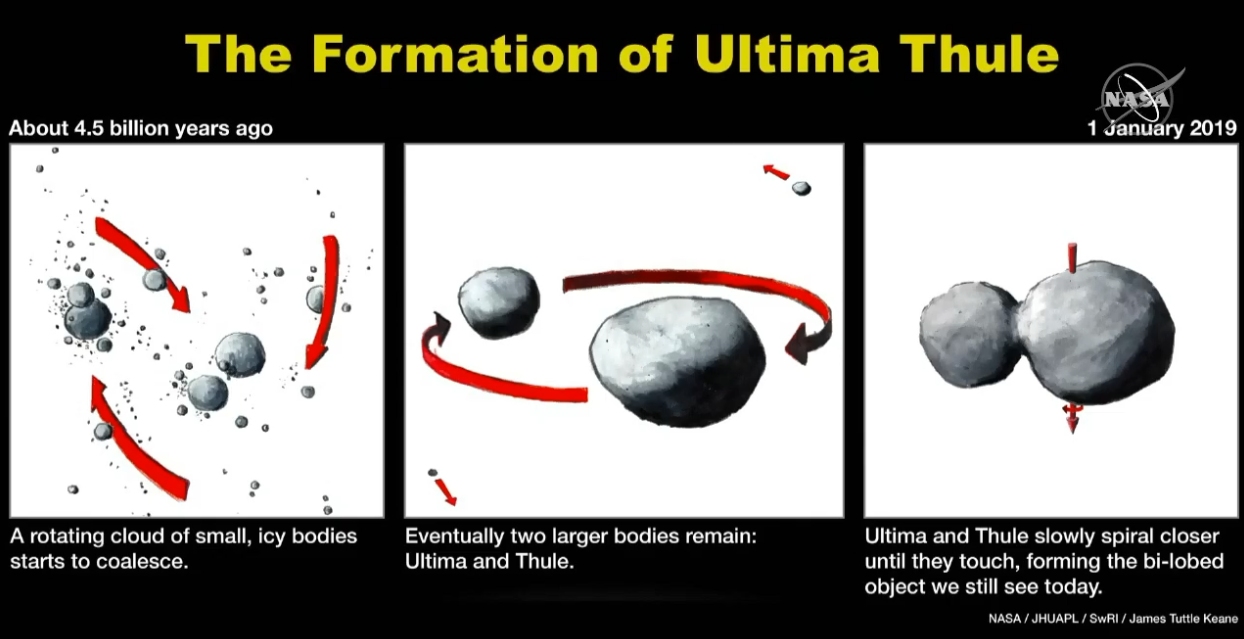Why it matters: The last few years have been incredibly exciting for space exploration thanks to successful missions from probes like Cassini and New Horizons. With any luck, upcoming projects like the James Webb Space Telescope will further expand our understanding of the universe.
NASA during a press conference on Wednesday shared the clearest images yet of Ultima Thule, the furthest object ever explored by a spacecraft.
Before today, it wasn't known if Ultima Thule was a single object or two objects orbiting one another. Based on the preliminary data, scientists now believe Ultima Thule is a contact binary - two pieces of space rock that slowly came together over time.
It kind of resembles the bottom and middle structures of a traditional snowman as one section is about twice the size of the other.

The newly released images were captured on January 1 as the New Horizons probe flew within 2,200 miles of Ultima Thule's surface at about 32,000 miles per hour. At around 4.1 billion miles from Earth, it takes roughly six hours for radio signals from the probe to reach Earth.
This are only the first images from the probe, captured at a resolution of about 140 meters per pixel. NASA said during today's press conference that better lighting and closer proximity to the target will result in much improved images. At its closest, the probe will capture images with a resolution of around 35 meters per pixel.
